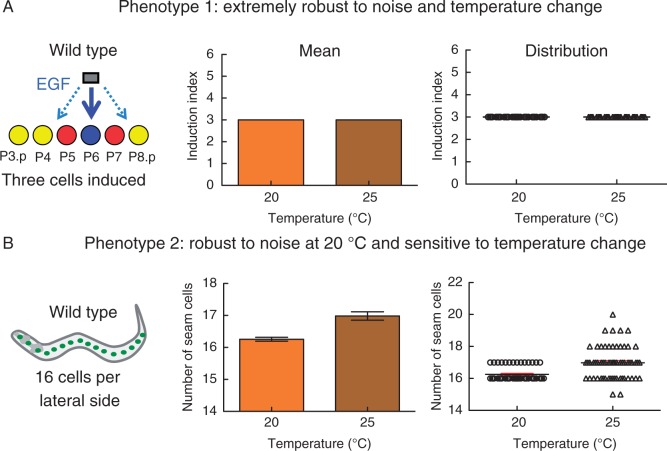Fig. 1.
Comparison of developmental robustness between two Caenorhabditis elegans nematode tissues. (A) Vulval development in C. elegans involves induction of only three cells (P5.p–P7.p) out of a group of six competent cells, by adopting one of the two following cell fates; the primary cell fate, which is acquired by P6.p (depicted in blue), and the secondary fate, which is adopted by P5.p and P7.p (depicted in red). The remaining cells P3.p, P4.p and P8.p (in yellow) act as a back-up system and can only be induced if P5.p–P7.p fail to do so. An EGF-like molecule is the main inducer of the vulva. It is secreted from the anchor cell of the somatic gonad, which is located dorsally to the Pn.p cells. The average number of induced cells in the population (three in the wild type) can be used as a way to quantify the phenotype (phenotype 1). The induction index is robust to stochastic noise both at 20 °C (standard growth temperature) and at 25 °C. (B) Seam cells are epithelial stem cell-like cells in C. elegans. The number of cells (16 per lateral side) can be used as a quantitative phenotype, and this number is robust at 20 °C but not at 25 °C (phenotype 2). However, seam cell number at 20 °C is less robust compared with the vulval induction index (note the increase in standard error in seam cell number). Note the difference in information that can be inferred from analysing the mean (panels in the centre) and phenotypic distribution (right-hand panels). For example, phenotype 2 distribution is wider at 25 °C, with a bias towards an increase in seam cell number. Data in both (A) and (B) come from our lab after phenotyping 50 animals of the lab reference strain N2.

